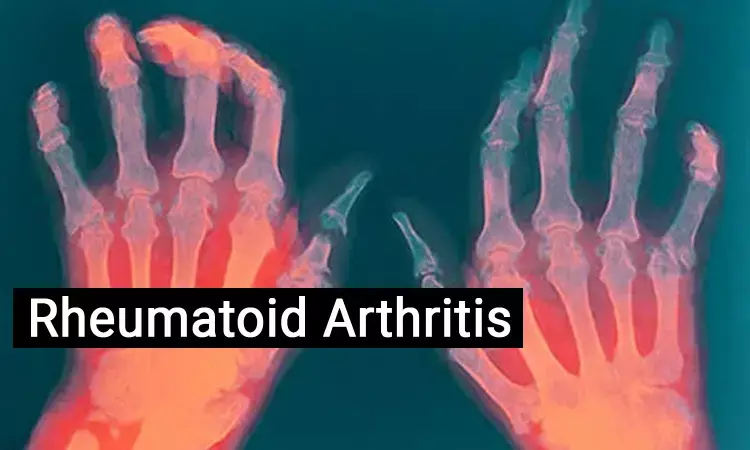- Home
- Medical news & Guidelines
- Anesthesiology
- Cardiology and CTVS
- Critical Care
- Dentistry
- Dermatology
- Diabetes and Endocrinology
- ENT
- Gastroenterology
- Medicine
- Nephrology
- Neurology
- Obstretics-Gynaecology
- Oncology
- Ophthalmology
- Orthopaedics
- Pediatrics-Neonatology
- Psychiatry
- Pulmonology
- Radiology
- Surgery
- Urology
- Laboratory Medicine
- Diet
- Nursing
- Paramedical
- Physiotherapy
- Health news
- Fact Check
- Bone Health Fact Check
- Brain Health Fact Check
- Cancer Related Fact Check
- Child Care Fact Check
- Dental and oral health fact check
- Diabetes and metabolic health fact check
- Diet and Nutrition Fact Check
- Eye and ENT Care Fact Check
- Fitness fact check
- Gut health fact check
- Heart health fact check
- Kidney health fact check
- Medical education fact check
- Men's health fact check
- Respiratory fact check
- Skin and hair care fact check
- Vaccine and Immunization fact check
- Women's health fact check
- AYUSH
- State News
- Andaman and Nicobar Islands
- Andhra Pradesh
- Arunachal Pradesh
- Assam
- Bihar
- Chandigarh
- Chattisgarh
- Dadra and Nagar Haveli
- Daman and Diu
- Delhi
- Goa
- Gujarat
- Haryana
- Himachal Pradesh
- Jammu & Kashmir
- Jharkhand
- Karnataka
- Kerala
- Ladakh
- Lakshadweep
- Madhya Pradesh
- Maharashtra
- Manipur
- Meghalaya
- Mizoram
- Nagaland
- Odisha
- Puducherry
- Punjab
- Rajasthan
- Sikkim
- Tamil Nadu
- Telangana
- Tripura
- Uttar Pradesh
- Uttrakhand
- West Bengal
- Medical Education
- Industry
Light helps arthritis treatments target joints without side effects

Bethesda, MD - Researchers have found that a new light-activated drug delivery method helps confine treatments to the joints, which could reduce whole-body side effects.The technology may go a long way in reducing side effects of rheumatoid arthritis treatments can reduce symptoms. The study has been published in The FASEB Journal.
In the U.S., 1.3 million people are currently diagnosed with rheumatoid arthritis, a chronic disease that causes painful joint swelling that can eventually lead to bone loss and joint deformities.
"Our delivery system decreased arthritis in our experimental model while carrying and delivering much lower quantities of drug than is required for currently approved treatment," said Emilia Zywot, a doctoral candidate from the University of North Carolina in Chapel Hill and member of the team that developed the new drug delivery approach.
Ms. Zywot was scheduled to present this research at the American Society for Pharmacology and Experimental Therapeutics annual meeting in San Diego this month.
For the new delivery approach, a drug is attached to vitamin B12 molecules that are engineered to respond to low levels of laser light. Transfusion is then used to deliver red blood cells loaded with the vitamin B12 molecules into mice, where the cells circulate until activated.
The drug is only activated in areas that receive a low level of long-wavelength laser light, which can be administered from outside the body. This controllable activation allows a high concentration of drug to be released at the site of inflammation, thus requiring overall lower whole-body, or systemic, amounts of the drug for effective treatment.
To test their new method, the researchers administered the arthritis drug dexamethasone to arthritic mice via traditional injections and the light-based delivery system. Laser light was used to activate the light-responsive drug in an arthritic paw. They found that the light-based delivery system decreased arthritis using a three-fold lower dose of dexamethasone.
"We hope that our drug delivery platform will better control drug delivery and decrease the amount of systemic exposure and off-target effects," said Ms. Zywot. "We envision that it will be useful for any drug that can be synthetically attached to our light-responsive system, making it amenable to applications beyond arthritis."
The researchers plan to further investigate the light responsive drug delivery system in mouse models of arthritis to better understand efficacy of the new system compared to current treatments.
For more details click on the link: https://doi.org/10.1096/fasebj.2020.34.s1.04278
Hina Zahid Joined Medical Dialogue in 2017 with a passion to work as a Reporter. She coordinates with various national and international journals and association and covers all the stories related to Medical guidelines, Medical Journals, rare medical surgeries as well as all the updates in the medical field. Email: editorial@medicaldialogues.in. Contact no. 011-43720751
Dr Kamal Kant Kohli-MBBS, DTCD- a chest specialist with more than 30 years of practice and a flair for writing clinical articles, Dr Kamal Kant Kohli joined Medical Dialogues as a Chief Editor of Medical News. Besides writing articles, as an editor, he proofreads and verifies all the medical content published on Medical Dialogues including those coming from journals, studies,medical conferences,guidelines etc. Email: drkohli@medicaldialogues.in. Contact no. 011-43720751


